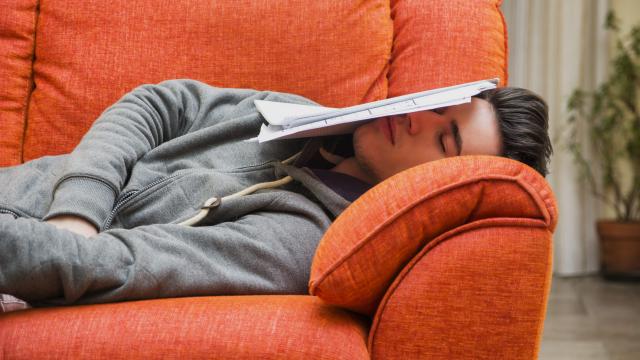After more than a century with an image problem, napping is getting a rebrand, courtesy of the U.S. Army. Many of our perceptions of naps — and the kind of people who take them — go back to Victorian times, when women were seen as physiologically weak and frail and prone to fainting, requiring periods of rest and recovery to get through the day. Between the tight corsets and rampant “hysteria” — a made-up diagnosis for wide range of psychological and physical symptoms associated with “female trouble” — Victorian women were perceived as fragile and childlike, requiring access to chaise lounges and rest cures.
Not only have naps been associated with weakness, but they’ve also been viewed as indulgent or lazy — only for those who had the extra time to devote to sleep. So this week, when the Army released the latest version of their Holistic Health and Fitness manual, the inclusion of what the New York Times refers to as “strategic and aggressive napping” stood out. Here’s what you need to know about the practice.
How to nap like you’re in the Army
A section of the updated manual that addresses improving and sustaining readiness says the following about naps:
When regular nighttime sleep is not possible due to mission requirements, Soldiers can use short, infrequent naps to restore wakefulness and promote performance. When routinely available sleep time is difficult to predict, Soldiers might take the longest nap possible as frequently as time is available.
Napping is also recommended to promote alertness:
Although the circadian rhythm of alertness generally promotes a 24-hour cycle of daytime wakefulness and nighttime sleep, there is also a temporary afternoon “dip” in alertness. This dip becomes especially noticeable in individuals who have a significant sleep debt (for example, not regularly obtaining adequate sleep). For those able to take advantage of it, the afternoon dip provides an opportunity for obtaining good quality daytime sleep to help pay down any existing sleep debt. Soldiers can generally take these naps without significantly disrupting the circadian rhythm of alertness — provided that the naps are not so long or so frequent that they begin to impair the ability to initiate sleep at night.
Why the new napping recommendations matter
In addition to providing guidance to members of the military, the updated manual also rebrands napping as an essential tool for mental and physical performance, rather than a luxury.
“The Army is on to something here,” Phillip Carter, a former soldier who served during the Iraq War and now teaches veterans’ policy at Georgetown University told the New York Times. “The old manual looked like something out of a gym class from the 1960s. There was lots of jumping jacks and wind sprints. It wasn’t keeping pace about what we knew about combat. The truth is, we know sleep is critical to better decision-making.”

Leave a Reply
You must be logged in to post a comment.